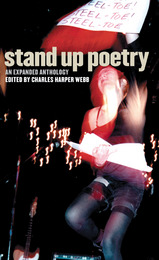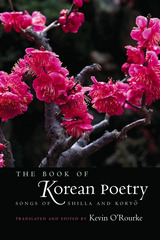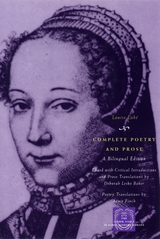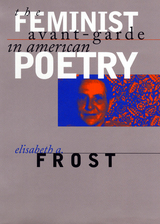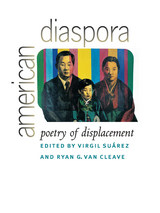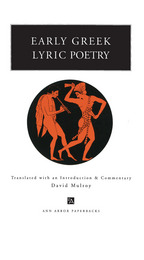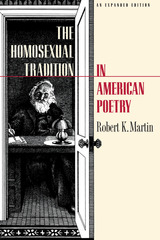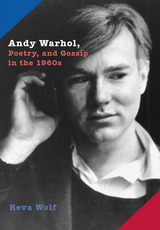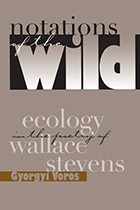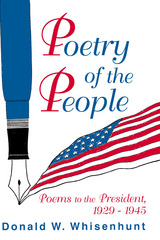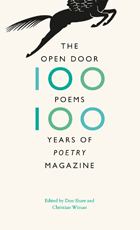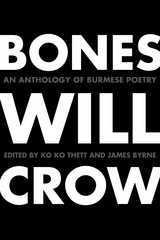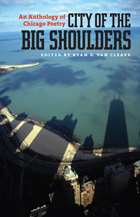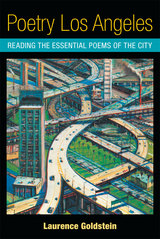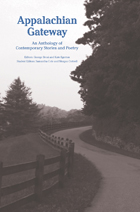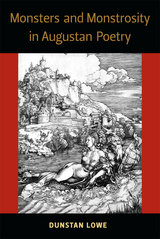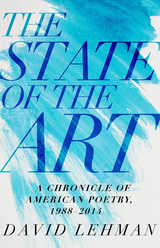PoetryCollection by Cassandra Verhaegen (17 items)A collection for waxing poetic. Includes the following tags:
1879-1955, 21st century, American poetry, Anthologies (multiple authors), Anthology, Appalachian Region, Big Shoulders, Bilingual Edition, Bio-bibliography, Book, California, Chicago (Ill.), City, Comparative Literature, Displacement, Ecology in literature, Epic, Feminism and literature, Gay men in literature, Gay men's writings, American, Goldstein, Laurence, Greek poetry, Homosexuality and literature, Individual Artists, Korean poetry, Latin poetry, Lehman, David, Literary collections, Los Angeles, Los Angeles (Calif.), Loss (Psychology), Migration, Internal, Monsters, Monsters in literature, Monstrosity, Mulroy, David, Nature in literature, O'Rourke, Kevin, Open Door, People, Poetics, Poetry, Prose, Reading, Refugees, Regional Studies, Share, Don, State, Stevens, Wallace, To 935, Translations into English, Van Cleave, Ryan G., Webb, Charles Harper, Wild, Years
See More
|
Stand Up Poetry
edited by Charles Harper Webb
University of Iowa Press, 2002
Contributors: Kim Addonizio Witty, sexy, gritty, outrageous, emotional, hilarious, honest, courageous. What do these words describe? A growing movement in American literary circles: Stand Up Poetry. Over twenty years ago, Charles Harper Webb discovered a vibrant and invigorating poetry scene in southern California. Featuring some of America's best contemporary poets, this scene, according to Webb, “showed insight, imagination, craft, philosophical depth, but most of all, it was funny, and it was fun.” Stand Up Poetry: The Poetry of Los Angeles and Beyond (1990) was the result of Webb's enthusiasm for this poetic genre. A decade later, the popularity of performance poetry, poetry slams, and poetry readings is on the rise, and Webb has expanded his anthology to include a greater sampling of poets from across the country. From Charles Bukowski to Billy Collins and Allison Joseph, the poets included in this collection are popular and emerging, classical and experimental, young and old; yet all exhibit the characteristics so important to Stand Up Poetry—humor, performability, accessibility, individuality. Most important, these poems are enjoyable when read silently or aloud, on the page or on the stage. Stand Up Poetry: An Expanded Anthology is at its core a celebration of poetry offering readers a wonderful lesson in the power of words to entertain and inspire.
1
|
The Book of Korean Poetry
by Kevin O'Rourke
University of Iowa Press, 2006
Korea’s history is divided into four periods: the Three Kingdoms of Koguryo (37 bc–ad 668), Shilla (57 bc–ad 668), and Paekche (18 bc–ad 660); Unified Shilla (668–935); Koryo (935–1392); and Choson (1392–1910). Kevin O’Rourke’s The Book of Korean Poetry traces Korean poetry from the pre-Shilla era to the end of Korea’s golden poetry period in the Koryo dynasty.There are two poetry traditions in Korea: hanshi (poems by Korean poets in Chinese characters) and vernacular poems, which are invariably songs. Hanshi is a poetry to be read and contemplated; the vernacular is a poetry to be sung and heard. Hanshi was aimed at personal cultivation, vernacular poetry primarily at entertainment. Hanshi was a much more private discipline; vernacular poetry was composed for the most part against a convivial background of wine, music, and dance.In this comprehensive treatment of the poetry of Shilla and Koryo, O’Rourke divides one hundred fifty poems into five sections: Early Songs, Shilla hanshi, Shilla hyangga, Koryo kayo, and Koryo hanshi and shijo. Only a few pre-Shilla poems are extant; O’Rourke features all five. All fourteen extant Shilla hyangga are included. Seventeen major Koryo kayo are featured; only a few short, incantatory pieces that defied translation were excluded. Fourteen of the fewer than twenty Koryo shijo with claims to authenticity are presented. From the vast number of extant hanshi, O’Rourke selected poems with the most intrinsic merit and universal appeal. In addition to introductory essays on the genres of hanshi, hyangga, Koryo kayo, and shijo, O’Rourke interleaves his graceful translations with commentary on the historical backgrounds, poetic forms, and biographical notes on the poets’ lives as well as guides to the original texts, bibliographical materials, and even anecdotes on how the poems came to be written. Along with the translations themselves, O’Rourke’s annotations of the poems make this volume a particularly interesting and important introduction to the scholarship of East Asian literature.
See More
2
|
Complete Poetry and Prose
by Louise Labé
translated by Deborah Lesko Baker and Annie Finch University of Chicago Press, 2006
Thanks to her acclaimed volume of poetry and prose published in France in 1555, Louise Labé (1522-66) remains one of the most important and influential women writers of the Continental Renaissance. Best known for her exquisite collection of love sonnets, Labé played off the Petrarchan male tradition with wit and irony, and her elegies respond with lyric skill to predecessors such as Sappho and Ovid. The first complete bilingual edition of this singular and broad-ranging female author, Complete Poetry and Prose also features the only translations of Labé's sonnets to follow the exacting rhyme patterns of the originals and the first rhymed translation of Labé's elegies in their entirety.
3
|
The Feminist Avant-Garde in American Poetry
by Elisabeth A. Frost
University of Iowa Press, 2005
The Feminist Avant-Garde in American Poetry offers a historical and theoretical account of avant-garde women poets in America from the 1910s through the 1990s and asserts an alternative tradition to the predominantly male-dominated avant-garde movements. Elisabeth Frost argues that this alternative lineage distinguishes itself by its feminism and its ambivalence toward existing avant-garde projects; she also thoroughly explores feminist avant-garde poets' debts and contributions to their male counterparts.
4
|
American Diaspora
edited by Virgil Suarez and Ryan G. Van Cleave
University of Iowa Press, 2001
Diaspora constitutes a powerful descriptor for the modern condition of the contemporary poet, the spokesperson for the psyche of America. The poems in American Diaspora: Poetry of Displacement focus on the struggles and pleasures of creating a home-physical and mental-out of displacement, exile, migration, and alienation. To fully explore the concept of diaspora, the editors have broadened the scope of their definition to include not only the physical act of moving and immigration but also the spiritual and emotional dislocations that can occur-as for Emily Dickinson and other poets-even in a life spent entirely in one location. v
5
|
Early Greek Lyric Poetry
translated by David Mulroy
University of Michigan Press, 1999
The Greek lyric poets composed some of the liveliest, juiciest, most personal lines that the ancient world ever knew. The very personal nature of these poems has made them perennial favorites with a wide variety of readers; it has also meant that they are often difficult to understand.
In Early Greek Lyric Poetry David Mulroy offers an accurate and lively translation of all the important lyric fragments and new papyri, as well as selections from the more fully preserved works of Theognis, Bacchylides, and Pindar. Unlike any other version of these poems, Early Greek Lyric Poetry also provides a translation of the literary context in which each poem survives. This format enables readers to see for themselves why particular lines or phrases happen to be preserved, and it also provides information on how earlier writers understood the poems. The poems and fragments are accompanied by a comprehensive introduction to the genre and to the individual poets, explanatory notes, and a useful bibliography. Early Greek Lyric Poetry is indispensable for courses on Greek culture and literature in translation or on literary "great books." David Mulroy is Associate Professor of Classics, University of Wisconsin at Milwaukee. He is also the author of Horace's Odes and Epodes: Translated with an Introduction and Commentary.
6
|
Homosexual Tradition in American Poetry
edited by Robert K. Martin
University of Iowa Press, 1998
In this expanded edition, Robert Martin sketches an account of American gay male poetry since the 1970s, including an overview of works by Rafael Campo, Mark Doty, Marlon Riggs, and Reginald Shepherd.
7
|
Andy Warhol, Poetry, and Gossip in the 1960s
by Reva Wolf
University of Chicago Press, 1997
Andy Warhol is usually remembered as the artist who said that he wanted to be a machine, and that no one need ever look further than the surface when evaluating him or his art. Arguing against this carefully crafted pop image, Reva Wolf shows that Warhol was in fact deeply emotionally engaged with the people around him and that this was reflected in his art. Wolf investigates the underground culture of poets, artists, and filmmakers who interacted with Warhol regularly. She claims that Warhol understood the literary imagination of his generation and that recognizing Warhol's literary activities is essential to understanding his art. Drawing on a wealth of unpublished material, including interviews, personal and public archives, tape recordings, documentary photographs, and works of art, Wolf offers dramatic evidence that Warhol's interactions with writers functioned like an extended conversation and details how this process impacted his work. This highly original and fascinating study gives us fresh insight into Warhol's art as practice and reformulates the myth that surrounds this popular American artist.
8
|
Notations Of The Wild
by Gyorgyi Voros
University of Iowa Press, 1997
In the summer of 1903, just before he turned twenty-four, Wallace Stevens joined a six-week hunting expedition to the wilderness of British Columbia. The adventure profoundly influenced his conceptions of language and silence, his symbolic geography, and his sensibilities toward wild nature as nonhuman “other.” The rugged western mountains came to represent that promontory of experience—“green's green apogee”—against which Stevens would measure the reality of all his later perceptions and conceptions and by which he would judge the purpose and value of works of the human imagination. Notations of the Wild views his poetry as a radical reimagining of the nature/culture dialectic and a reinstatement of its forgotten term—Nature. Gyorgyi Voros focuses on three governing metaphors in Stevens' poems—Nature as house, Nature as body, and Nature as self. She argues that Stevens' youthful wilderness experience yielded his primary subject—the relationship between human beings and nonhuman nature—and that it spurred his shift from a romantic to a phenomenological understanding of nature. Most important, it prompted him to reject his culture's narrow humanism in favor of a singular vision that in today's terms would he deemed ecological.
9
|
Poetry of the People
by Donald W. Whisenhunt
University of Wisconsin Press, 1996
The Great Depression was one of the most traumatic events of recent American history. Donald W. Whisenhunt has analyzed, and provided context for, the vast collection of poetry and song lyrics in the Hoover and Roosevelt presidential libraries to assess another aspect of American public opinion.
See More
The poets of the era voiced their opinions on virtually every subject. They wrote about New Deal agencies, they praised and condemned Hoover and Roosevelt. They expressed their views about the Supreme Court, the third term, and the approaching war in Europe. The resulting study, arranged topically rather than chronologically, provides a unique perspective on American popular culture and American politics.
10
|
The Open Door
edited by Don Share and Christian Wiman
University of Chicago Press, 2012
When Harriet Monroe founded Poetry magazine in Chicago in 1912, she began with an image: the Open Door. “May the great poet we are looking for never find it shut, or half-shut, against his ample genius!” For a century, the most important and enduring poets have walked through that door—William Carlos Williams and Wallace Stevens in its first years, Rae Armantrout and Kay Ryan in 2011. And at the same time, Poetry continues to discover the new voices who will be read a century from now. Poetry’s archives are incomparable, and to celebrate the magazine’s centennial, editors Don Share and Christian Wiman combed them to create a new kind of anthology, energized by the self-imposed limitation to one hundred poems. Rather than attempting to be exhaustive or definitive—or even to offer the most familiar works—they have assembled a collection of poems that, in their juxtaposition, echo across a century of poetry. Adrienne Rich appears alongside Charles Bukowski; poems by Isaac Rosenberg and Randall Jarrell on the two world wars flank a devastating Vietnam War poem by the lesser-known George Starbuck; August Kleinzahler’s “The Hereafter” precedes “Prufrock,” casting Eliot’s masterpiece in a new light. Short extracts from Poetry’s letters and criticism punctuate the verse selections, hinting at themes and threads and serving as guides, interlocutors, or dissenting voices. The resulting volume is an anthology like no other, a celebration of idiosyncrasy and invention, a vital monument to an institution that refuses to be static, and, most of all, a book that lovers of poetry will devour, debate, and keep close at hand.
11
|
Bones Will Crow
edited by James Byrne and ko ko thett
Northern Illinois University Press, 2013
This is the first anthology of contemporary Burmese poets published in the United States and it includes the work of Burmese poets who have been in exile and in prison. The poems include global references from a culture in which foreign books and the Internet are regarded with suspicion and where censorship is an industry. The poets have been ingenious in their use of metaphor to escape surveillance and censorship, writing post-modern, avant-garde, performance, and online poetries.
The anthology reveals the transition of Burmese poetry from traditionalism to modernism, as well as the development of Burmese poetry over the second half of the twentieth century, as Myanmar has changed. Through their wildly diverse styles, these poems delight in the freedom to experiment with poetic tradition.
12
|
City of the Big Shoulders
edited by Ryan G. Van Cleave
University of Iowa Press, 2012
Chicago has served as touchstone and muse to generations of writers and artists defined by their relationship to the city’s history, lore, inhabitants, landmarks, joys and sorrows, pride and shame. The poetic conversations inspired by Chicago have long been a vital part of America’s literary landscape, from Carl Sandburg and Gwendolyn Brooks to experimental writers and today’s slam poets. The one hundred contributors to this vibrant collection take their materials and their inspirations from the city itself in a way that continues this energetic dialogue.
The cultural, ethnic, and aesthetic diversity in this gathering of poems springs from a variety of viewpoints, styles, and voices as multifaceted and energetic as the city itself. Cristin O’Keefe Aptowicz: “I want to eat / in a city smart enough to know that if you / are going to have that heart attack, you might / as well have the pleasure of knowing // you’ve really earned it”; Renny Golden: “In the heat of May 1937, my grandfather / sits in the spring grass of an industrial park / with hundreds of striking steelworkers”; Joey Nicoletti: “The wind pulls a muscle / as fans yell the vine off the outfield wall, / mustard-stained shirts, hot dog smiles, and all.” The combined energies of these poems reveal the mystery and beauty that is Second City, the City by the Lake, New Gotham, Paris on the Prairie, the Windy City, the Heart of America, and Sandburg’s iconic City of the Big Shoulders.
13
|
Poetry Los Angeles
by Laurence Goldstein
University of Michigan Press, 2014
Is there such a thing as Los Angeles poetry? How do we assess a poem about a city as elusive of identity as Los Angeles? What features do poems about this unique urban landscape of diverse peoples and terrains have in common? Poetry Los Angeles is the first book to gather and analyze poems about sites as different as Hollywood, Santa Monica and Venice beaches, the freeways, downtown, South Central and East L.A. Laurence Goldstein presents original commentary on six decades of poets who have contributed to the iconography and poetics of Los Angeles literature, including Elizabeth Alexander, Jimmy Santiago Baca, Dorothy Barresi, Victoria Chang, Wanda Coleman, Dana Gioia, Joy Harjo, James Harms, Robert Hass, Eloise Klein Healy, Garrett Hongo, Suzanne Lummis, Paul Monette, Harryette Mullen, Carol Muske-Dukes, Frederick Seidel, Gary Soto, Timothy Steele, Diane Wakoski, Derek Walcott, and Charles Harper Webb. Forty poems are reproduced in their entirety.
One chapter is devoted to Charles Bukowski, the celebrity face of the city’s poetry. Other chapters discuss the ways that poets explore “Interiors” and “Exteriors” throughout the cityscape. Goldstein also provides ample connections to the novels, films, art, and politics of Southern California. In clear prose, Poetry Los Angeles examines the strategies by which poets make significant places meaningful and memorable to readers of every region of the U.S. and elsewhere.
14
|
Appalachian Gateway
edited by George Brosi and Kate Egerton
University of Tennessee Press, 2013
Featuring the work of twenty-five fiction writers and poets, this anthology is a captivating introduction to the finest of contemporary Appalachian literature. Here are short stories and poems by some of the region’s most dynamic and best-loved authors: Barbara Kingsolver, Ron Rash, Nikki Giovanni, Robert Morgan, Lisa Alther, and Lee Smith among others. In addition to compelling selections from each writer’s work, the book includes illuminating biographical sketches and bibliographies for each author.
These works encompass a variety of themes that, collectively, capture the essence of Appalachia: love of the land, family ties, and the struggle to blend progress with heritage. Readers will enjoy this book not just for the innate value of good literature but also for the insights it provides into this fascinating area. This book of fiction is an enlightening companion to non-fiction overviews of the region, including the Encyclopedia of Appalachia and A Handbook to Appalachia: An Introduction to the Region, both published by the University of Tennessee Press in 2006. In fact the five sections of this book are the same as those of the Encyclopedia. Educators and students will find this book especially appropriate for courses in creative writing, Appalachian studies and Appalachian literature. Editor George Brosi’s foreword presents an historical overview of Appalachian Literature, while Kate Egerton and Morgan Cottrell’s afterword offers a helpful guide for studying Appalachian literature in a classroom setting. George Brosi is the editor of Appalachian Heritage, a literary quarterly, and, along with his wife, Connie, runs a retail book business specializing in books from and about the Appalachian region. He has taught creative writing, Appalachian studies and Appalachian literature.
Kate Egerton is an associate professor of English at Berea College. She has taught Appalachian literature and published scholarship in that field as well as in modern drama. Samantha Cole majored in Appalachian Studies and worked for Appalachian Heritage while a student at Berea College. Morgan Cottrell is a West Virginia native who took Kate Egerton's Appalachian literature class at Berea College.
15
|
Monsters and Monstrosity in Augustan Poetry
by Dunstan Lowe
University of Michigan Press, 2015
Roman poets of the Augustan period reinvented monsters from Greek myth, such as Harpies, Furies, and the warring Centaurs and Giants. These monsters represented the attractions and dangers of novelty in various contexts, ranging from social values to artistic innovation. Rome’s two great epics of the early principate, Vergil’s Aeneid and Ovid’s Metamorphoses, are both filled with mythical monsters. Like the culture that produced them, these poets were fascinated by unfamiliar forms despite their potential to disturb and disrupt.
Monsters and Monstrosity in Augustan Poetry is the first full-length study of monsters in Augustan poetry, and the first metapoetic reading of monstrosity in classical antiquity. Dunstan Lowe takes a fresh approach to the canonical works of Vergil, Ovid, and their contemporaries, contributing to a very recent turn toward marvels, monsters, and deformity in classical studies.
Monsters provided a fantastical means to explore attitudes toward human nature, especially in its relationship with sex. They also symbolized deformations of poetic form. Such gestures were doomed to replay the defeat of hypermasculine monsters yet, paradoxically, they legitimized poetic innovation. Lowe proposes that monstrosity was acutely topical during the birth of the principate, having featured in aesthetic debates of the Hellenistic age, while also serving as an established, if controversial, means for public figures to amaze the population and display their power.
Monsters and Monstrosity in Augustan Poetry will appeal to scholars and students of classical Latin literature and of interdisciplinary monster studies.
16
|
The State of the Art
by David Lehman
University of Pittsburgh Press, 2015
The acclaimed annual, The Best American Poetry, is the most prestigious showcase of new poetry in the United States and Canada. Each year since the series began in 1988, David Lehman has contributed a foreword, and this has evolved into a sort of state-of-the-art address that surveys new developments and explores various matters facing poets and their readers today. This book collects all twenty-nine forewords (including the two written for the retrospective “Best of the Best” volumes for the tenth and twenty-fifth anniversaries.) Beginning with a new introduction by Lehman and a foreword by poet Denise Duhamel (guest editor for The Best American Poetry 2013), the collection conveys a sense of American poetry in the making, year by year, over the course of a quarter of a century.
17
|
| Click here to go to the beginning. | |||||||||||||||||
